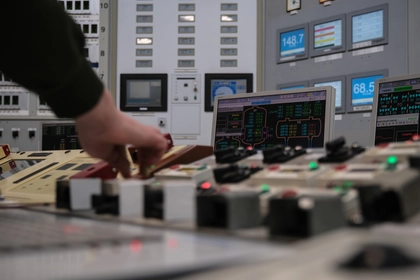Ukrainian forces reportedly destroyed a Russian 203mm 2S7 Pion self-propelled artillery gun using the American High Mobility Artillery Rocket System (HIMARS).
The Luhansk Operative-Tactical Group of the Armed Forces of Ukrainian (AFU) released the a video of the strike. Kyiv Post could not independently verify the time and location of the footage.
JOIN US ON TELEGRAM
Follow our coverage of the war on the @Kyivpost_official.
According to the Khortytsia Operational and Strategic Group on Telegram, Ukrainian fighters hit the Russian Pion with a precise artillery strike near Lysychansk.
“At the time of the attack, ammunition was being unloaded from the Kamaz truck,” the report read.
The drone footage initially shows the Russian artillery gun before Ukrainian forces launch their strike. A massive explosion follows, with thick clouds of smoke rising after the hit.
The Pion self-propelled gun was originally designed to destroy critical enemy targets using nuclear ammunition from a distance of up to 47 km.
Development on the Pion began on July 8, 1970, with testing completed by 1973. However, initial tests showed the gun’s firing range fell short of expectations. This issue was eventually resolved by modifying the powder charges.
In 1975, the Pion was officially adopted by the Soviet Army, and by 1977, it was equipped to fire nuclear ammunition.
The Pion primarily uses OF43 high-explosive and rocket-assisted projectiles. The high-explosive fragmentation rounds weigh 110 kg, containing nearly 18 kg of explosives. These 203mm shells can be fired up to 37.5 km, although the performance largely depends on the quality of the powder charges.

IMF Approves $1.1 Billion Loan Disbursement to Ukraine Before Trump Inauguration
Additionally, rocket-assisted projectiles, with about 14 kg of explosives, can reach up to 47.5 km – Pion’s maximum range.
To destroy heavily fortified targets, the Pion can fire concrete-piercing projectiles, which strike targets at speeds exceeding Mach 2.
You can also highlight the text and press Ctrl + Enter






